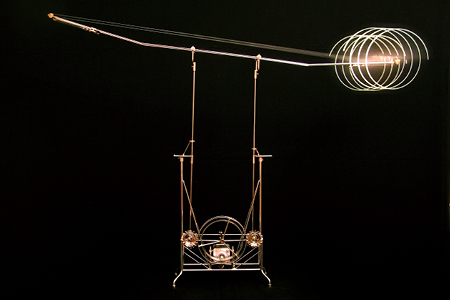Cosmic Birds at IDFB 2016
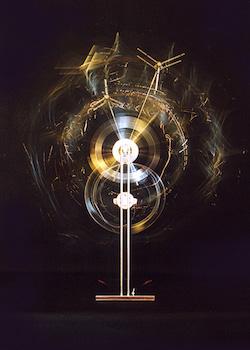
By Ito Shun
Birmingham Municipal Bank
2 to 20 May 2016
Review by Dominika Mackiewicz
When several years ago two friends, Japanese kinetic sculptor Ito Shun and Birmingham based choreographer Miyata Kei, met in the UK’s second city, they came up with an idea for an interdisciplinary project, combining art installation and dance performance. Inspired by the rich industrial heritage of the Black Country, Ito and Miyata travelled across the area and absorbed the atmosphere of abandoned warehouses and workshops, filled with the sounds of metal, machines and human presence. This experience resulted in Ito’s exhibition Cosmic Birds, part of the International Dance Festival 2016 in Birmingham. Both ex-dancers, Ito and Miyata (the curator of the show) made movement a unifying theme, expressing not only a very personal understanding of motion, but its meditative and scientific aspects.
Cosmic Birds comprised twenty mechanical assemblages dancing in the ghostly offices and spaces of the old Municipal Bank located in the very heart of Birmingham. The site of the show contributed to the pervading sense of otherness. The Bank remains closed to the public, rarely opening its heavy, cast-iron doors, and this architectural treasure, boasting the grandeur of its atrium and a maze of more dilapidated rooms, was once more brought back to life through Ito’s artistic intervention. His use of movement served to guide attendees through the building, the machines casting an intricate array of shadows and light, creating an immersive atmosphere and a strong sense of having stepped into a memory. (Indeed, throughout the bank, one is confronted by signs and symbols that hark back to a different age. One inscription reads ‘Thrift radiates happiness’).
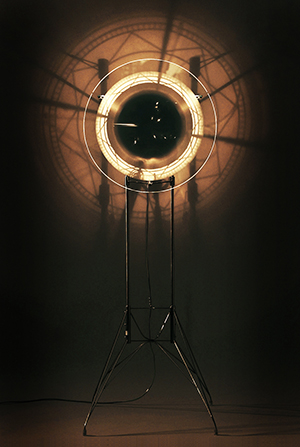
(2006). Photo: Ito Shun
While some sculptures were small and innocent in their merry-go-round structure and angelic appearance, others were clearly inspired by the Futurist movement, dynamic metal skeletons exposed. Wires, gears and cogs, all made from scratch, performed hypnotising dances as they span, climbed and fell. The way they cut through the air, much like archaic astronomical models, recalled the titular ‘cosmic birds’, combining mechanical, scientific and aesthetic sensibilities.
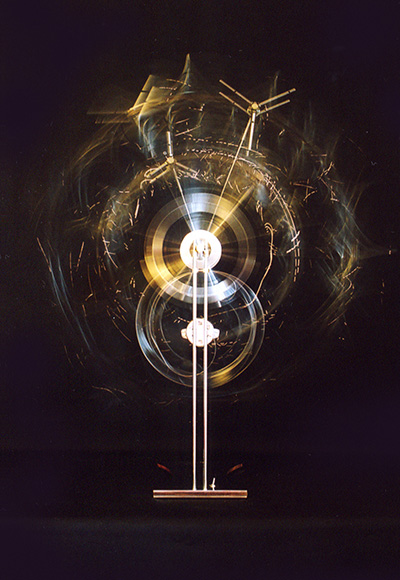
Photo: Ito Shun
Central to Ito’s artistic experiments is gravity and his sense of its profound beauty. In this exhibition he considered what gravity looks like and how it sounds. This effort came across most clearly in his trio of kinetic sculptures Cosmic Birds, which lend their name to the exhibition. Situated side by side, these three identical sculptures expose the engineering mechanisms that pass the movement continuously from one part onto another. Inside each of the steel frames, a satellite-like cosmic bird is moving up and down as if on a trapeze. The hypnotizing effect of this piece is additionally heightened by the heartbeat-like sounds emanating from the speakers. Created by spinning air and the amplified movements of the three ‘cosmic birds’, this is Ito’s rendering of the sound of motion.
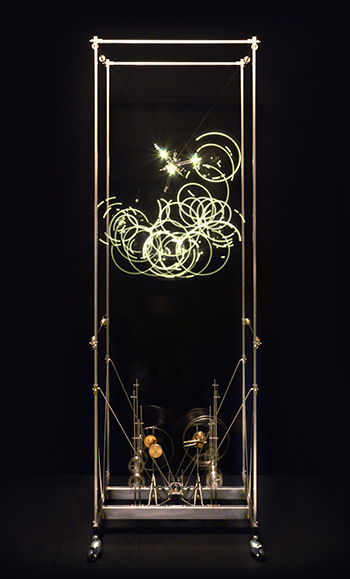
Photo: Ito Shun
Cells, a giant mobile suspended from the ceiling of the Banks’s main hall is the piece inspired and made in Birmingham. Consisting of two hundred steel rings that rotate slowly thanks to gravitational pull, the installation echoed the shape of the old Bank’s clock and emphasised the impermanence of life, a very potent symbol in Japanese aesthetics. The contemplative character of the sculpture, as well as its simplicity and universality was used by Kei Miyata for In a Landscape, a dance performance based on the beauty of ‘mindful’ movement. Created with an ensemble of local people practising dance, yoga and martial arts, the choreography presented a dreamlike landscape, where humans met in an austere place and influenced each other in often invisible, yet profound ways.
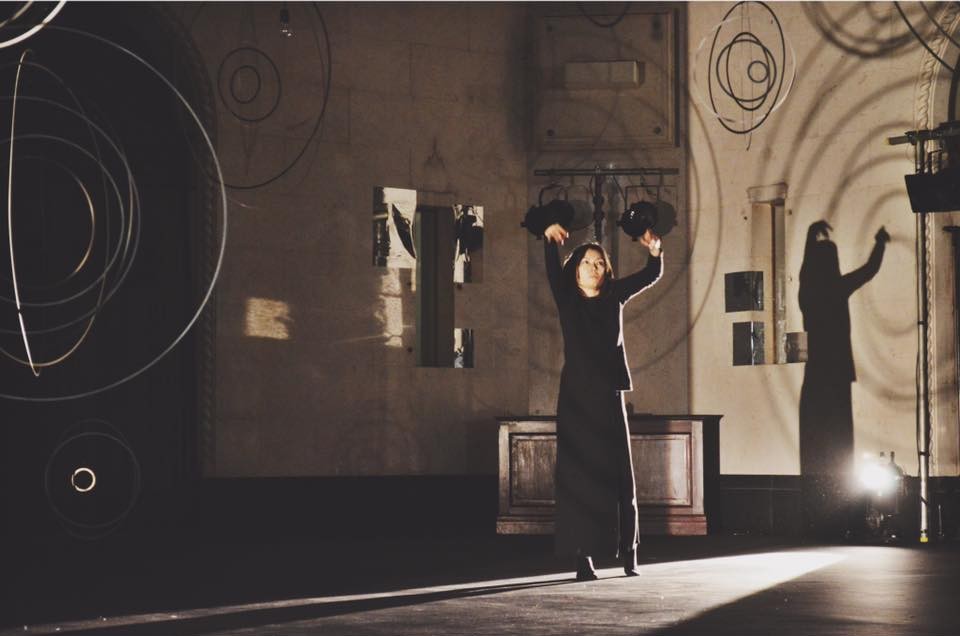
Dressed in black, the dancers performed repetitive movements among the hanging Cells and exercised their own and the audience’s attention. Each brought their own emotional and physical quality to the dance, but only together were they able to create a symbiotic collective. In this way, they formed a muted, rhythmical surrounding for Miyata’s expressive performance.
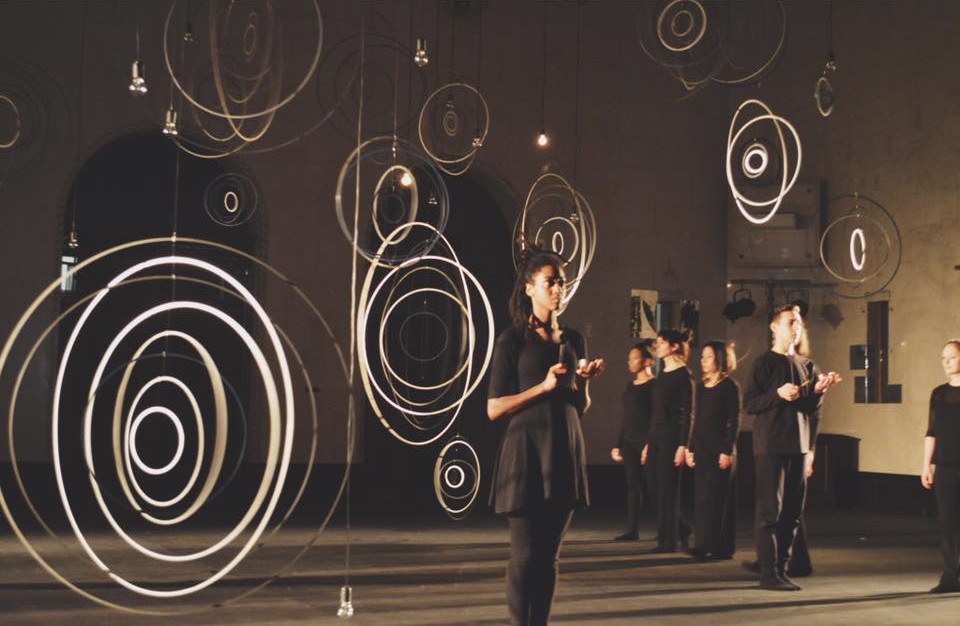
Miyata, inspired by the writings of Miyazawa Kenji (also a key influence in Ito’s work), created a spectacle more abstract than narrative, where words are replaced by movements reminding us of shodō, the Japanese art of calligraphy: controlled but spontaneous, focused and impulsive. As a result, In a Landscape conveyed an impression of living art that is strongly related to nature and life; art that comes from the individual’s inside and is motivated by simply being part of the world.
